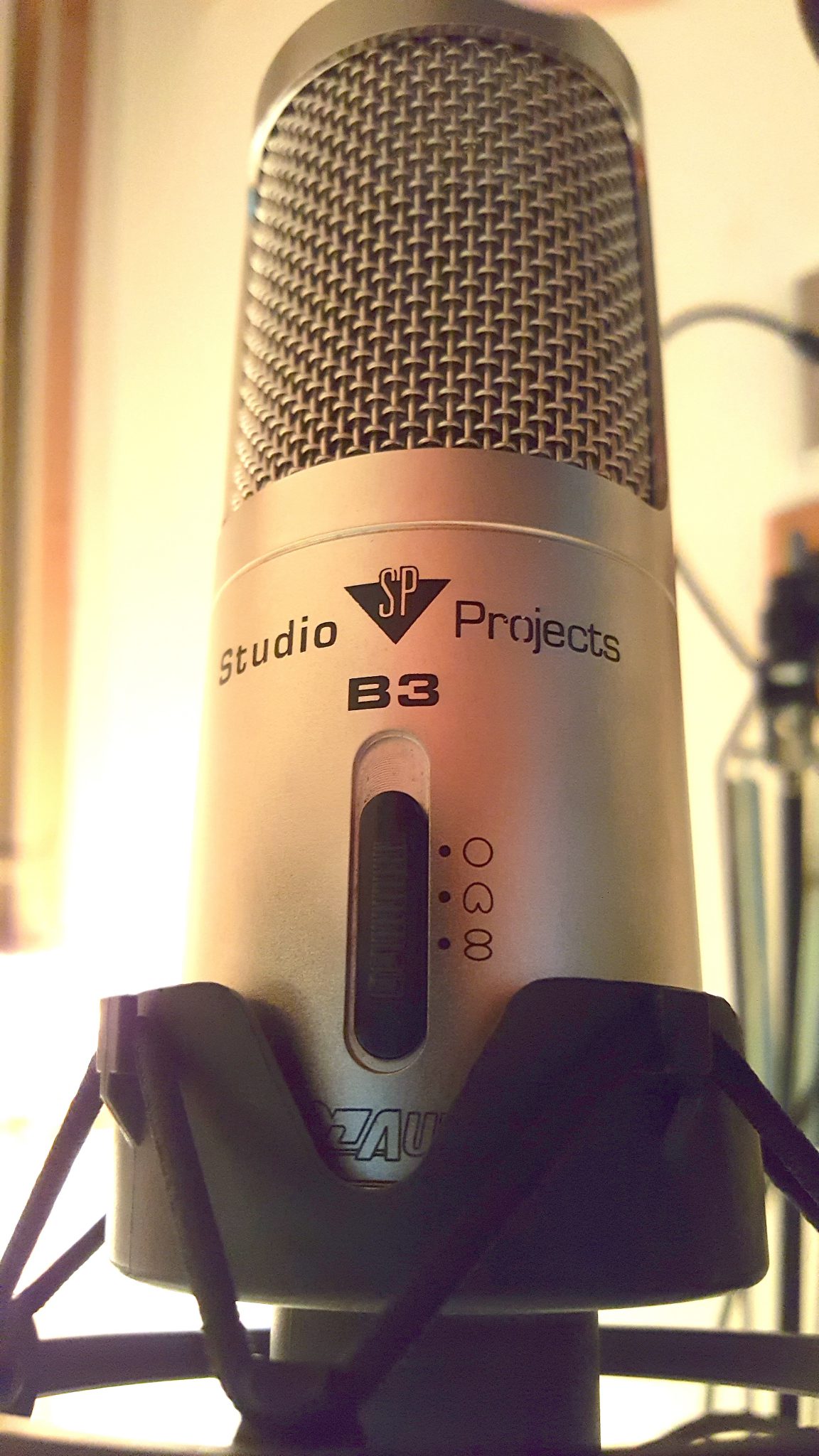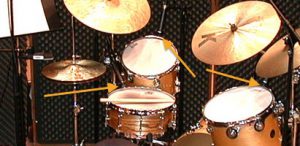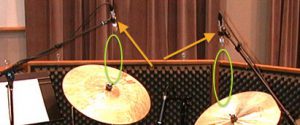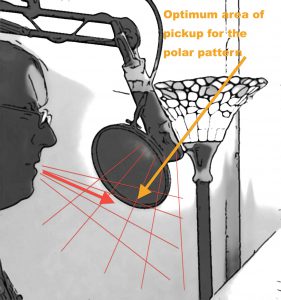
In this video post, I will be talking about the cardioid sweet spot on large diaphragm condenser microphones.
Too many people are getting this wrong and I want to make sure you’re not one of them.
But first, I feel the need to emphasize the difference between a condenser mic and a dynamic mic.
Why Voice Talent Use A Condenser Mic
In the voice-over industry, we use condenser mics because of their ability to capture incredible detail in the human voice. Notably the airiness of the spoken word as well as the lower frequency range that gives us richness.
The large diaphragm of these mics is responsible for that richness.
Keep those two things in mind, they will be important later.
Condenser microphones use electronics to transform sound waves into electrical current. This makes them incredibly sensitive, which is a crucial factor in terms of the cardioid sweet spot.
Why Musicians Use A Dynamic Mic
Dynamic microphones are not very sensitive. They use a MOVING coil to dynamically transform sound waves into electrical current.
These moving coils take a bit more effort to engage than the capsule on a condenser mic would. That is one of the reasons why they can handle so much sound pressure level or SPL.
They are also excellent feedback suppressors, which is the reason they are used in live music situations.
Picture the singer on stage with a mic in his hand and leaning over with his foot up on the floor monitor. That monitor has the parts of the music from the band that he needs to hear, as well as his vocal, blasting out of it, and yet there is no feedback.


You already know that even if your headphones are too loud, you will get feedback with a condenser mic.
If you have ever seen how an electric guitar amp is recorded, you will most likely see a dynamic microphone right up to the speaker of the amp.
If you have ever seen how a drum kit is recorded, you will see many dynamic mics right up to the rim or skin of each individual drum. You can get great separation from drum to drum with this technique even though they are close together.

Try that with condenser microphones and you will wild up with a mess of bleed that would be useless to bother trying to mix correctly.
Even with putting a gate on each drum, when that gate opens there would just be too many of the other parts of the kit coming through.
In both cases of electric guitar and drums, these will usually be smaller diaphragm mics placed right up against the sound source, except for the kick drum or lower tom where low frequency content is desired.
Right on the edge of the cardioid polar pattern, or the beginning if you will, is the sweet spot for dynamic microphones.
Meanwhile, the rest of the polar pattern is capturing the resonance of the drum or the resonance of the guitar amp cabinet.
Here is another thing to consider, many dynamic vocal mics will have a ball shaped grill that is lined on the inside with a foam material that acts as a pop filter. It also helps to control sibilance.
You won’t find foam lining the grill of a condenser. In fact, with most, you can easily see the capsule because they are completely exposed.
They are intentionally made that way for a reason.
When A Condenser Is Used For Music
Situations where you will see a condenser mic being used for music is when AIR is required to capture the essence of the instrument.
A good example is an acoustic guitar.
A small diaphragm condenser mic will be used, because there is no need to capture low frequency content, and that mic will be placed a good 12 inches of more from the guitar.
This allows the AIR waves to add texture and breath to that instrument.
Overheads, or mics placed over the drummer’s head to capture cymbals, are usually condensers because of the desired openness that a cymbal’s interaction with AIR has on the sound.

They also give a more roomy sound to the rest of the kit that is mixed in with the direct sound of the dynamics.
When vocals are being recorded in a studio, it is usually after the music is recorded.
This puts the vocalist in an environment where the extreme volume of live music is not necessary. The vocalist can wear headphones to hear the music and get a better sense of his or her performance.
Now engineers have the opportunity to capture more subtlety and detail in the vocal performance, and more AIR, for lack of a more descriptive word.
In this quieter environment, the vocalist has a little more room to back away from the mic.
Do you see where this is going?
What type of microphone do you think they will use?
If you answered “A large diaphragm condenser”, you are correct!
This is not to say that great vocal performances have not been captured with a dynamic, but they lack the airy quality that condensers give.
Is There A Point To All This?
Yes.
Many of you just starting out in the voice industry are missing the cardioid sweet spot of your condenser microphones.
And some of you that have been in the industry for a while are, too.
It is not at the edge of the polar pattern.
It is not right up against the mic where the polar pattern starts.
Picture a pool in your backyard.
Are you getting the most out of it by hanging on to the edge every time you get in?
Or would you rather be out in the center of the pool where you get the full benefit?
Imagine the water in the pool as the polar pattern.
Because of the large diaphragm, condenser mics will display much more unwanted proximity effect if you are too close to the capsule where the polar pattern begins.
The Cardioid Sweet Spot
This is why I recommend setting up your pop filter with your fist in between the filter and your mic, to keep you at least 5 or 6 inches away.
The sweet spot for a large diaphragm condenser mic with a cardioid polar pattern is somewhere in the 8 to 14 inches range. A tremendous difference to being right up against the grill.
Try it out and see if your recordings don’t have more realism and natural feel to them.
Please leave a comment if you agree or disagree. I would like to hear why.


Yet another great tutorial on the mic’s sweet spot.
Watching you demonstrate that, Jim really brings it home.
Every voice talent, especially those new to the business should be watching and learning from you and what you are you showing.
Keep up the great work.
Hey Steve, Thanks!
I am happy that you are getting so much out of my posts, especially with you being such a seasoned talent in the industry. I started this site with the hope of helping new people coming into the voice-over world. I am finding that more and more professionals that have been voicing for years are visiting my site and subscribing to my newsletter.
I think there are so many who are looking for a new approach to doing things, or get into a routine when there are other options that may produce better results.